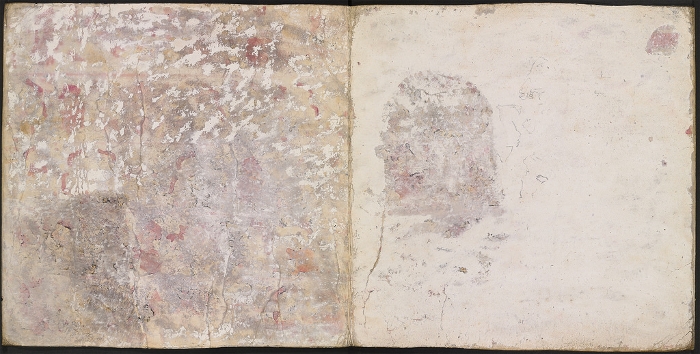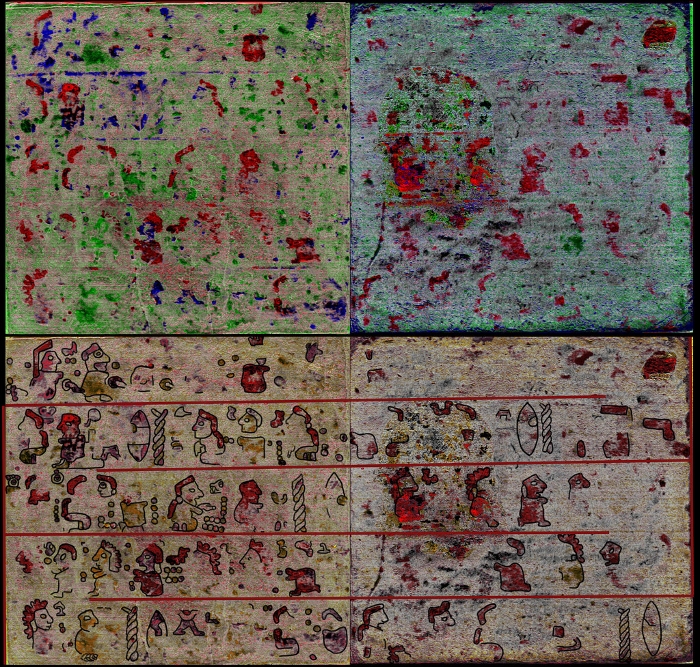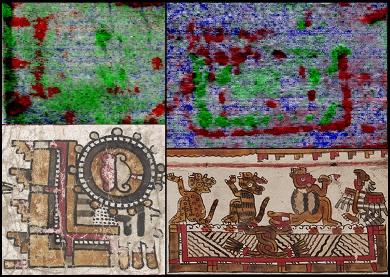
High-tech imaging reveals rare precolonial Mexican manuscript hidden from view for 500 years
Researchers from the University of Oxford’s Bodleian Libraries and from universities in the Netherlands have used high-tech imaging to uncover the details of a rare Mexican codex dating from before the colonisation of America.

The newly-revealed codex, or book, has been hidden from view for almost 500 years, concealed beneath a layer of plaster and chalk on the back of a later manuscript known as the Codex Selden, which is housed at the Bodleian Libraries. Scientists have used hyperspectral imaging to reveal pictographic scenes from this remarkable document and have published their findings in the Journal of Archaeology: Reports.
Ancient Mexican codices are some of the most important artefacts of early Mexican culture and they are particularly rare. Codex Selden, also known as Codex Añute, dates from around 1560 and is one of less than 20 known Mexican codices to have survived the colonisation of America. Of those, it is one of only five surviving manuscripts from the Mixtec area, now known as Oaxaca in Mexico. These codices use a complex system of pictures, symbols and bright colours to narrate centuries of conquering dynasties and genealogies as well as wars and the history of ancient cities. In essence these codices provide the best insight into the history and culture of early Mexico.

Since the 1950s, scholars have suspected that Codex Selden is a palimpsest: an older document that has been covered up and reused to make the manuscript that is currently visible. Codex Selden consists of a 5-metre-long strip of deer hide that has been covered with white plaster made from gypsum and chalk, and folded in a concertina format into a 20-page document. The manuscript underwent a series of invasive tests in the 1950s when one page was scraped, uncovering a vague image that hinted at the possibility that an earlier Mexican codex is hidden beneath.
Until now, no other technique has been able to unveil the concealed narrative in a non-invasive way. The organic paint that was used to create the vibrant images on early Mexican codices does not absorb x-rays, which rules out x-ray analysis that is commonly used to study later works of art.
‘After 4 or 5 years of trying different techniques, we’ve been able to reveal an abundance of images without damaging this extremely vulnerable item. We can confirm that Codex Selden is indeed a palimpsest,’ said Ludo Snijders from Leiden University, who conducted the research with David Howell from the Bodleian Libraries and Tim Zaman from the University of Delft. This is the first time an early Mexican codex has been proven to be a palimpsest.
‘What’s interesting is that the text we’ve found doesn’t match that of other early Mixtec manuscripts. The genealogy we see appears to be unique, which means it may prove invaluable for the interpretation of archaeological remains from southern Mexico,’ Snijders said.
Some pages feature more than 20 characters sitting or standing in the same direction. Similar scenes have been found on other Mixtec manuscripts, representing a King and his council. But the analysis of this particular text shows that the characters are both male and female, raising interesting questions about what the scene represents.
The imaging has also revealed a prominent individual who appears repeatedly on the document and is represented by a large glyph consisting of a twisted chord and a flint knife. The name seems to resemble a character found in other Mexican codices: the Codex Bodley (in the Bodleian’s collection) and Codex Zouche-Nuttall (in the British Museum).That character is an important ancestor of two lineages connected to the important archaeological sites of Zaachila and Teozacualco in Mexico. However, further analysis is needed to confirm that it is the same individual.

The researchers analysed seven pages of the codex for this study and revealed other images including people walking with sticks and spears, women with red hair or headdresses and place signs containing the glyphs for rivers. They are continuing to scan the remainder of the document with the aim of reconstructing the entire hidden imagery, allowing the text to be interpreted more fully.
‘Hyperspectral imaging has shown great promise in helping us to begin to reconstruct the story of the hidden codex and ultimately to recover new information about Mixtec history and archaeology,’ said David Howell, Head of Heritage Science at the Bodleian Libraries. ‘This is very much a new technique, and we’ve learned valuable lessons about how to use hyperspectral imaging in the future both for this very fragile manuscript and for countless others like it.’
